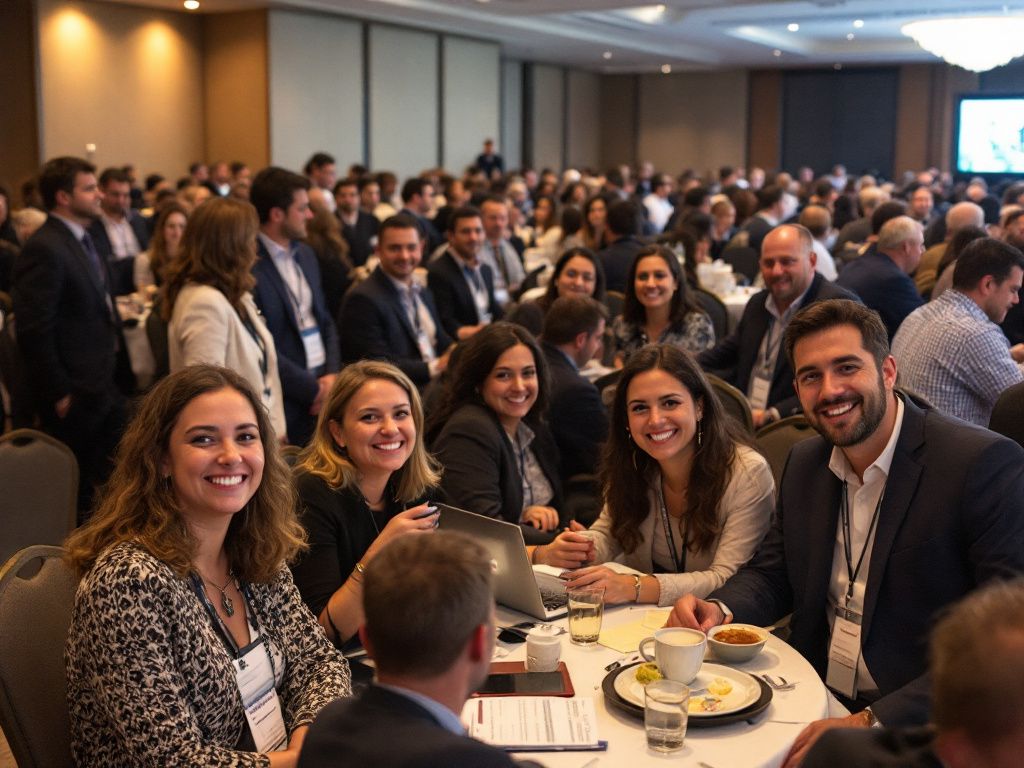So, you’re gearing up for a big event at your professional association, huh? Whether it’s an annual conference, a networking shindig, or any other kind of grand gathering, you know that it’s the perfect moment to snap some impressive professional association photos. Capturing the spirit and interaction of these events is not just about clicking some good shots—it’s about preserving memories and presenting your organization in the best light. Let me take you through the ropes, and trust me, getting event preparation right will make you the hero of the hour.
Why Professional Photos Matter
Ever felt envious scrolling through another association’s photo albums on social media and thought, “Our events never look this good”? Professional photos don’t just happen; they’re planned, styled, and executed. Professional photos can elevate your association’s image, create engaging content, and perhaps most importantly, they’re crucial for your marketing strategy. Who wouldn’t want to see a vibrant snapshot that promises professional networking and endless potential?
Seems simple, right? But wait, there’s so much you need to consider, from lighting to venue layout to maintaining a balance between candid and posed shots. Let’s dive into how to nail it.
[Maintaining a Photo-Ready Environment](#maintaining-a-photo-ready-environment)
**Start with Venue Selection**
Choosing the right venue is foundational. Think of it as setting the stage for your photos. Venues with good natural lighting or interesting architectural details can greatly boost the aesthetic value of your pictures. Low ceilings, dimly lit rooms? More challenges than you’d expect. You’ll want options with flexible space arrangements to navigate and capture every moment expertly.
A neat trick is conducting a pre-event visit with your photographer. Walk through potential venue spots, point out where notable interactions usually happen, and discuss lighting needs. Event preparation isn’t just crossing off a to-do list; it’s about visualizing the experience you want to share through those photos.
**Plan Every Detail**

Arranging seating, podium setups, and displays strategically can make or break your photos. Ensure chairs don’t block focal points, and maintain clear paths for the photographer to move around freely. Decorate meaningfully—it’s more fun to see shots where even the table settings scream, “We care about this day as much as you do.”
Let’s face it: clean, uncluttered backgrounds keep your photos from looking busy or chaotic. Less is more, especially when you’re working on being photo-ready consistently.
**Lights, Camera, Action**
You could have the world’s best photographer, but with bad lighting? Forget it. Daytime events generally favorably play with natural lighting, making them easier to manage. For those evening affairs, invest in good lighting arrangements—subtle but effective options like LED uplighters or string lights, adding depth and warmth.
[Dressing the Part — Attendee’s Edition](#dressing-the-part)
Attire, my friend, speaks volumes. Encourage attendees to dress in a semi-formal or business casual manner that aligns with your professional image. Having a subtle dress code doesn’t only look good on pictures but elevates the overall feel of the event.
Circling back to attire, coordinating a theme with simple, classic colors can add uniformity to shots, without being too matchy-matchy. Sometimes a splash of common tones like a tie or a scarf is enough to bind professionally separated individuals into one cohesive scene.
[Essential Shots You Won’t Want to Miss](#essential-shots-you-wont-want-to-miss)
**Candid Moments**
Some of the most powerful images result from unposed, candid shots. Pictures of attendees genuinely interacting, sharing a laugh, or passionately discussing business—they’re gold. They capture authenticity and convey the true essence of what your association stands for.
Encourage your photographer to lurk in the background during key moments, always being camera-ready to catch these fleeting yet profound interactions.
**Speaker Photos**

You absolutely need to spotlight your speakers. Whether it’s during their poised speeches or candid shots during panel discussions, their representation in your professional photos is crucial. Ensure the stage is well-lit, and microphones won’t obscure their faces—I cannot stress this enough.
**Group Dynamics**
Don’t underestimate group photos. They demonstrate community, camaraderie, and achievement. Arrange groups naturally but purposefully, ensuring every member feels included and isn’t awkwardly placed behind taller participants.
_Quick tips: Encourage originality with professional ‘cheerful’ poses over routine wince-level shoulder holds._
[Fixing Common Pitfalls](#fixing-common-pitfalls)
**Avoid Overexposure**
Outdoor events are particularly tricky. While sunlit afternoons sound heavenly, pictures can easily wash out—use reflective surfaces or portable shades to manage shadows without bleaching your subjects.
**Too Posed: A No-No**
While structured group photos have their merit, overly posed photos can feel dull and manufactured. Counterbalance with natural, fun interactions. Never underestimate the power of a spontaneous high-five or engaged dialogue photo.
**Forgetting the Diverse Angles**
Don’t stay static. Professional association photos can stick out purely because the image perspective feels engaging or heavy with attention to details.

Think high vantage points, low shots capturing people in motion—it’s all on the table.
[Showcasing Your Photos](#showcasing-your-photos)
**Maximize Social Media**
Social media platforms are your unsung heroes. Encourage live sharing with dynamic hashtags. Keep narratives bursting with enthusiasm about keynote speakers or unexpected turned-fellowship moments.
Remember: Timing is crucial. Aim to upload a few snazzy teasers during the event but save the comprehensive albums for a few days after. Keeps the buzz alive. Ever notice those curated year(ish)-in-review Instagram posts? Influence fans to eagerly anticipate more.
**Craft the Perfect Photo Album**
Curate an album that tells the story of your event gracefully. Having themed subsections—such as “Networking,” “Speakers,” or “Entertainment”—gives viewers a structured yet animated look at the day’s nature.
**Repurpose for Marketing**
Your professional association photos represent untapped wealth for annual reports, newsletters, and promotional content. A perfectly placed photo can say more about your event prep and association values than a thousand cleverly constructed paragraphs. Trust that moment—to strengthen member ties and hook traditionally curious minds.
[Conclusion: Bring It All Together](#conclusion-bring-it-all-together)
Photo-ready is not rocket science, but it does require thoughtful strategy and execution. Remember: behind each striking photo lies preparation, a leap of interaction faith, and a dash of creativity. With the right event planning backbone, ultimately capturing professional photos effectively turns into a joyful dance you’ll want to repeat again and again.
By meticulously planning lighting, venue selection, shot lists, and final presentation strategies, you’re creating a visually inviting space for newcomers and existing members. And truly, they’ll admire not just the vivid photos encapsulated but your polished event preparation dedication. Pretty neat, right? Now, get out there and make those professional association photos happen—they’re not just snapshots; they’re your association’s story. Fresh and engaging as ever.
Frequently Asked Questions
What is the most important part of event preparation?
The most important part of event preparation is determining the purpose of the event. This purpose sets the tone for everything else, including the goals, target audience, theme, budget, and choice of venue. It ensures that all parties involved are on the same page and working towards a common goal[5].
What are the key elements to consider when planning an event?
Key elements to consider include defining the type of event and its goals, identifying the target audience and expected number of attendees, selecting an appropriate venue, arranging for necessary permits and licenses, coordinating logistics such as catering, audio-video needs, and security, and ensuring compliance with health and safety standards[1][3][5].
How do you ensure the success of a virtual or hybrid event?
To ensure the success of a virtual or hybrid event, it is crucial to have engaging content, prepared speakers, and effective technology. For virtual events, pre-event preparation includes testing the platform, assigning roles to team members, and promoting the event through simple registration forms and follow-up emails. For hybrid events, you need to decide which content will be accessible to both virtual and in-person audiences and ensure smooth transitions between different segments of the event[2][4].
What stages are involved in the event planning process?
The event planning process involves several stages, including Research, Design, Planning, Coordination, Implementation, Evaluation, and Follow-up. Additionally, the process can be broken down into Initiation, Planning, Execution, Monitoring and controlling, and Closure. These stages help ensure a structured approach to creating successful and memorable events[3].
References










